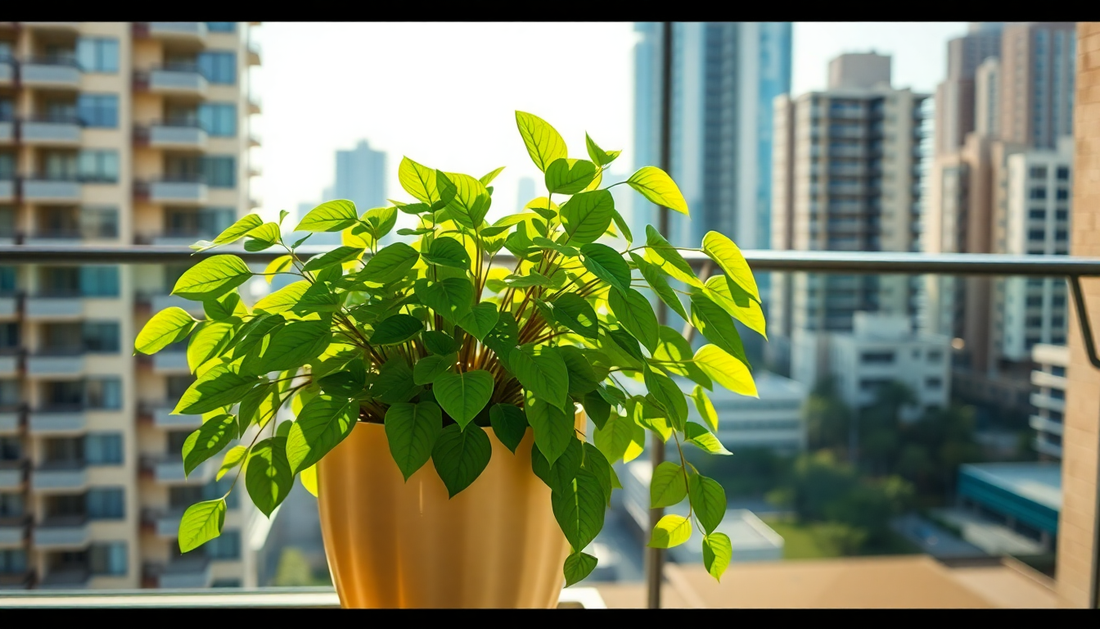
Grow Curry Leaves Like a Pro: A Beginner's Guide to Apartment Gardening
Share
Curry leaves are a staple in Indian cuisine, adding a distinct aroma and flavor to countless dishes. But did you know that you can easily grow these fragrant leaves right in your own apartment? Whether you have a small balcony, a sunny windowsill, or even just a corner of your kitchen, with the right techniques, you can enjoy a bountiful harvest of fresh curry leaves all year round.
In this comprehensive guide, we'll walk you through the step-by-step process of growing curry leaves in your apartment, from selecting the right variety to maintaining a healthy plant. Get ready to transform your urban space into a thriving oasis of culinary delight!
Choosing the Right Curry Leaf Variety
When it comes to growing curry leaves in an apartment, the key is to select a variety that is well-suited for container gardening. The most popular choice is the Murraya koenigii, also known as the "curry tree" or "sweet neem." This variety is known for its compact growth habit, making it an ideal choice for small spaces.
Another option is the Murraya paniculata, or the "orange jessamine." While this variety can grow a bit taller, it still maintains a manageable size and produces an abundance of fragrant leaves.
Whichever variety you choose, make sure to select a plant that is healthy and disease-free. Look for plants with vibrant green leaves and a strong, sturdy stem. Avoid any plants that appear wilted, discolored, or infested with pests.
Preparing the Ideal Growing Environment
Curry leaves thrive in warm, humid conditions, which makes them well-suited for apartment living. Here's how to create the perfect growing environment:
Choosing the Right Container
Select a container that is at least 12 inches deep and has adequate drainage holes. Clay or terracotta pots are excellent choices as they allow the soil to breathe and prevent waterlogging. Avoid plastic containers, as they can trap moisture and lead to root rot.
Providing Ample Sunlight
Curry leaves require a minimum of 6 hours of direct sunlight per day. If your apartment doesn't have a sunny spot, consider placing the plant near a south-facing window or investing in a grow light to supplement the natural light.
Maintaining Optimal Soil Conditions
Use a well-draining, nutrient-rich potting mix specifically formulated for container gardening. Avoid using regular garden soil, as it can become compacted and lead to poor drainage. You can also mix in some compost or vermicompost to provide additional nutrients.
Regulating Humidity
Curry leaves thrive in humid environments. To increase the humidity around your plant, you can mist the leaves regularly or place the pot on a tray filled with pebbles and water.
Controlling Temperature
Curry leaves prefer warm temperatures, ideally between 70°F and 85°F (21°C to 29°C). Avoid exposing the plant to sudden temperature changes or drafts, as this can stress the plant and affect its growth.
Planting and Caring for Your Curry Leaves
Now that you've set up the perfect growing environment, it's time to plant your curry leaves and start caring for them. Follow these steps to ensure a thriving, long-lasting plant:
Planting the Curry Leaf Plant
Gently remove the plant from its nursery container and place it in the center of your prepared pot. Backfill with the potting mix, making sure to firm the soil around the roots to prevent air pockets. Water the plant thoroughly, allowing the excess water to drain out.
Watering and Feeding
Curry leaves prefer consistently moist soil, but be careful not to overwater. Check the soil regularly and water when the top inch or two feels dry to the touch. Avoid letting the soil become waterlogged, as this can lead to root rot.
Fertilize your curry leaf plant every 4-6 weeks during the growing season (spring and summer) using a balanced, water-soluble fertilizer. Dilute the fertilizer to half the recommended strength to prevent over-fertilization.
Pruning and Harvesting
Regular pruning is essential for maintaining a compact, bushy growth habit. Snip off any dead or damaged leaves, and trim the plant's tips to encourage branching and a fuller appearance.
To harvest the leaves, simply pinch off the desired amount, leaving at least 4-6 leaves on each stem. This will ensure the plant continues to thrive and produce new growth.
Overwintering and Pest Management
As the weather cools, your curry leaf plant may go into a semi-dormant state. Reduce watering and fertilizing during this time, and move the plant to a slightly cooler, but still sunny, location.
Keep an eye out for common pests like aphids, mealybugs, or spider mites. Regularly inspect the leaves and stems, and address any infestations promptly using organic pest control methods.
Enjoying the Fruits of Your Labor
With the right care and attention, your apartment-grown curry leaves will reward you with a bountiful harvest. Incorporate the fresh leaves into your favorite Indian dishes, or use them to infuse oils, teas, and even cocktails with their distinctive aroma and flavor.
Growing curry leaves in your apartment may seem like a daunting task, but with this comprehensive guide, you'll be well on your way to becoming a master of apartment gardening. Embrace the joy of cultivating your own culinary herbs and spices, and enjoy the satisfaction of harvesting homegrown ingredients for your meals.
Happy gardening!
